Flexible switching, high link reliability, and external power and storage
- The triple-radio frequency design (one 5G and two 2.4G/5G radio frequencies) supports flexible switching between 2.4 GHz and 5 GHz. SDR allows users to customize radio functions for different applications
- Dual Ethernet interfaces support link aggregation and traffic load balancing to ensure link reliability
- The USB interface is used for external power supply and storage
AP4030TN Product Description
Product appearance
Appearance
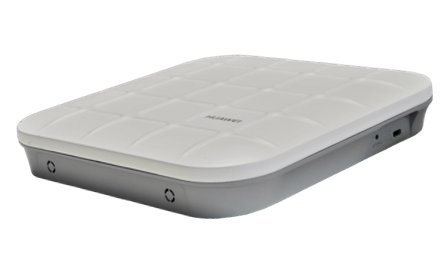
Ports
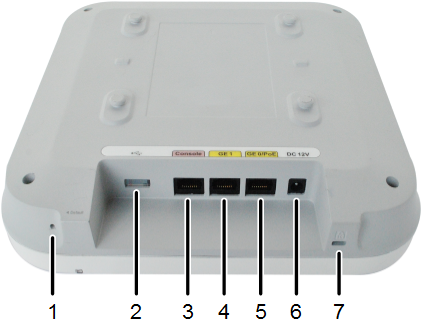
1. Default button: Restores factory settings and restarts the device if you hold down the button for more than 3 seconds
2. USB port: Connects to a USB flash drive to extend the storage space of the AP, and provides a maximum 2.5W of power
3. Console port: Connects to a maintenance terminal for AP configuration and management
4. GE1: 10M/100M/1,000M port used to connect to the wired Ethernet
5. GE0/PoE: 10M/100M/1,000M port used to connect to the wired Ethernet. The port can connect to a PoE power supply to provide power for APs
6. Input port for 12V DC power supply
7. Security lock slot: Protects the AP against theft
LED Indicators
Note: Indicator colors may vary slightly at different temperature
| Type |
Color |
Status |
Description |
| Default Status after Power-on |
Green |
Steady on |
The AP is just powered on and the software is not started yet |
| Software Startup Status |
Green |
Steady on after blinking once |
After the system is reset and starts uploading the software, the indicator blinks green once. Until the software is uploaded and started, the indicator remains steady green |
| Running Status |
Green |
Blinking once every 2 seconds (0.5 Hz) |
- The system is running properly, the Ethernet connection is normal, and STAs are associated with the AP
- The system enters the Uboot CLI
|
| Blinking once every 5 seconds (0.2 Hz) |
The system is running properly, the Ethernet connection is normal, and no STA is associated with the AP. The system is in low power consumption state |
| Alarm |
Green |
Blinking once every 0.25 seconds (4 Hz) |
- The software is being upgraded
- After the software is uploaded and started, the AP working in Fit AP mode requests to go online on the AC and maintains this state until it goes online successfully on the AC (before the CAPWAP link is established)
- The AP working in Fit AP mode fails to go online on the AC (the CAPWAP link disconnects)
|
| Fault |
Red |
Steady on |
A fault that affects services has occurred, such as a DRAM detection failure or system software loading failure. The fault cannot be automatically rectified and must be rectified manually |
Product characteristics
WLAN features
- Compliance with IEEE 802.11a/b/g/n/ac
- Maximum rate of 2 Gbit/s
- Maximum Ratio Combining (MRC)
- Space Time Block Code (STBC)
- Low-Density Parity-Check (LDPC)
- Maximum-Likelihood Detection (MLD)
- Frame aggregation, including A-MPDU (Tx/Rx) and A-MSDU (Rx only)
- 802.11 Dynamic Frequency Selection (DFS)
- Short GI in 20 MHz, 40 MHz and 80 MHz modes
- Priority mapping and packet scheduling based on a Wi-Fi Multimedia (WMM) profile to implement priority-based data processing and forwarding
- Automatic and manual rate adjustment
- WLAN channel management and channel rate adjustment (Note: For details about WLAN channel management, see the Country Code & Channel Compliance Table)
- Automatic channel scanning and interference avoidance
- Service Set Identifier (SSID) hiding
- Signal Sustain Technology (SST)
- Unscheduled Automatic Power Save Delivery (U-APSD)
- Control And Provisioning of Wireless Access Points (CAPWAP) in Fit AP mode
- Automatic login in Fit AP mode
- Extended Service Set (ESS) in Fit AP mode
- Wireless Distribution System (WDS) in Fit AP mode
- Mesh networking in Fit AP mode
- Multi-user CAC
Network features
- Compliance with IEEE 802.3ab
- Auto-negotiation of the rate and duplex mode and automatic switchover between the Media Dependent Interface (MDI) and Media Dependent Interface Crossover (MDI-X)
- Compliance with IEEE 802.1q
- SSID-based VLAN assignment
- VLAN trunk on uplink Ethernet ports
- Management channel of the AP uplink port in tagged and untagged mode
- DHCP client, obtaining IP addresses through DHCP
- Tunnel data forwarding and direct data forwarding
- STA isolation in the same VLAN
- Access Control Lists (ACLs)
- Link Layer Discovery Protocol (LLDP)
- Uninterrupted service forwarding upon CAPWAP channel disconnection in Fit AP mode
- Unified authentication on the AC in Fit AP mode
- AC dual-link backup in Fit AP mode
- NAT in Fat AP mode
- IPv6 in Fit AP mode
QoS features
- Priority mapping and packet scheduling based on a Wi-Fi Multimedia (WMM) profile to implement priority-based data processing and forwarding
- WMM parameter management for each radio frequency
- WMM power saving
- Priority mapping for upstream packets and flow-based mapping for downstream packets
- Queue mapping and scheduling
- User-based bandwidth limiting
- Adaptive bandwidth management (the system dynamically adjusts bandwidth based on the number of users and radio environment to improve user experience)
- Airtime scheduling
- Smart Application Control (SAC) in Fit AP mode
Security features
- Open system authentication
- WEP authentication/encryption using a 64-bit, 128-bit, or 152-bit encryption key
- WPA/WPA2-PSK authentication and encryption (WPA/WPA2 personal edition)
- WPA/WPA2-802.1x authentication and encryption (WPA/WPA2 enterprise edition)
- WPA-WPA2 hybrid authentication
- WAPI authentication and encryption
- Wireless Intrusion Detection System (WIDS) and Wireless Intrusion Prevention System (WIPS), including rogue device detection and countermeasure, attack detection and dynamic blacklist, STA/AP blacklist and whitelist
- 802.1x authentication, MAC address authentication, and Portal authentication
- DHCP Snooping
- Dynamic ARP Inspection (DAI)
- IP Source Guard (IPSG)
Maintenance features
- Unified management and maintenance on the AC in Fit AP mode
- Automatic login and configuration loading, and Plug-and-Play (PnP) in Fit AP mode
- WDS zero-configuration deployment in Fit AP mode
- Mesh network zero-configuration deployment in Fit AP mode
- Batch upgrade in Fit AP mode
- Telnet
- STelnet using SSH V2
- SFTP using SSH V2
- Local AP management through the serial in, terface
- Web local AP management through HTTP or HTTPS in Fat AP mode
- Real-time configuration monitoring and fast fault location using the NMS
- SNMP v1/v2/v3 in Fat AP mode
- System status alarm
- Network Time Protocol (NTP) in Fat AP mode
BYOD
Note: The AP supports Bring Your Own Device (BYOD) only in Fit AP mode
- Identifies the device type according to the Organizationally Unique Identifier (OUI) in the MAC address
- Identifies the device type according to the User Agent (UA) information in an HTTP packet
- Identifies the device type according to DHCP options
- The RADIUS server delivers packet forwarding, security, and QoS policies according to the device type carried in the RADIUS authentication and accounting packets
Location service
Note: The AP supports the location service only in Fit AP mode
- Locates tags manufactured by AeroScout or Ekahau
- Locates Wi-Fi terminals
- Works with eSight to locate rogue devices
Spectrum analysis
Note: The AP supports spectrum analysis only in Fit AP mode
- Identifies interference sources such as baby monitors, Bluetooth devices, digital cordless phones (at 2.4 GHz frequency band only), wireless audio transmitters (at both the 2.4 GHz and 5 GHz frequency bands), wireless game controllers, and microwaves
- Works with eSight to perform spectrum analysis on interference sources
Product specifications
Basic Specifications
| Item |
Description |
| Technical Specifications |
Dimensions (H x W x D) |
53 mm x 220 mm x 220 mm |
| Weight |
0.86 kg |
| Power Specifications |
Power input |
- 12V DC ±10%
- PoE power supply: In compliance with IEEE 802.3at
|
| Maximum power consumption |
21.5W (excluding the output power of the USB port)
Note: The actual maximum power consumption depends on local laws and regulations |
| Environment Specifications |
Operating temperature |
–10°C to 45°C
|
| Storage temperature |
–40°C to 70°C |
| Operating humidity |
5% to 95% (non-condensing) |
| Ingress Protection Rating |
IP41 |
| Atmospheric pressure |
53 kPa to 106 kPa |
Radio Specifications
| Item |
Description |
| Antenna Type |
Built-in omnidirectional dual-band antenna |
| Antenna Gain |
- 2.4 GHz: 5 dBi
- 5 GHz: 5 dBi
|
| Maximum Number of Concurrent Users |
≤ 256 |
| Maximum Number of VAPs for Each Radio Frequency |
16 |
| Maximum Transmit Power |
- 2.4 GHz: 23 dBm (combined power)
- 5 GHz: 23 dBm (combined power)
Note: The actual transmit power depends on local laws and regulations. You can adjust the transmit power from the maximum transmit power to 1 dBm, in steps of 1 dB |
| Maximum Number of Non-overlapping Channels |
2.4 GHz
− 20 MHz: 3
− 20 MHz: 3
− 40 MHz: 1 |
5 GHz
− 20 MHz: 13
− 20 MHz: 13
− 40 MHz: 6
− 20 MHz: 13
− 40 MHz: 6
− 80 MHz: 3 |
Note: The table uses the number of non-overlapping channels supported by China as an example. The number of non-overlapping channels varies in different countries. For details, see the Country Code & Channels Compliance Table |
| Channel Rates Supported |
- 802.11b: 1, 2, 5.5 and 11 Mbit/s
- 802.11a/g: 6, 9, 12, 18, 24, 36, 48 and 54 Mbit/s
- 802.11n: 6.5 Mbit/s to 300 Mbit/s
- 802.11ac: 6.5 Mbit/s to 867 Mbit/s
|
| Receiver Sensitivity |
2.4 GHz 802.11b: –94 dBm @ 1 Mbit/s; –86 dBm@ 11 Mbit/s |
| 2.4 GHz 802.11g: -86 dBm @ 6 Mbit/s; -72 dBm @ 54 Mbit/s |
| 2.4 GHz 802.11n (HT20): -86 dBm @ MCS0; -69 dBm @ MCS7 |
| 2.4 GHz 802.11n (HT40): -83 dBm @ MCS0; -66 dBm @ MCS7 |
| 5 GHz 802.11a: -86 dBm @ 6 Mbit/s; -69 dBm @ 54 Mbit/s |
| 5 GHz 802.11n (HT20): -86 dBm @ MCS0; -68 dBm @ MCS7 |
| 5 GHz 802.11n (HT40): -83 dBm @ MCS0; -65 dBm @ MCS7 |
| 5 GHz 802.11ac (VTH20): -86 dBm @ MCS0NSS1; -63 dBm @ MCS8NSS1 |
| 5 GHz 802.11ac (VTH40): -83 dBm @ MCS0NSS1; -58 dBm @ MCS9NSS1 |
| 5 GHz 802.11ac (VTH80): -80 dBm @ MCS0NSS1; -55 dBm @ MCS9NSS1 |
Networking and applications
Fit AP networking (AP mode)
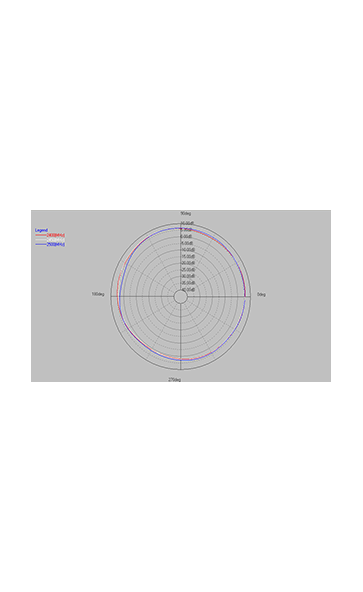
In this networking scenario, the AP functions as a fit AP. The AC is responsible for user access, AP go-online, AP management, authentication, routing, security, and QoS. Huawei AC products include the AC6605, AC6005, ACU2 (with S7700, S9700, or S12700), S5720-HI, S7700 (with X1E board), S9700 (with X1E board), and S12700 (with X1E board).
Fit AP networking (WDS mode: Point-to-Point)
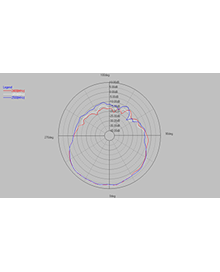
Fit AP networking (WDS mode: Point-to-Multipoint)
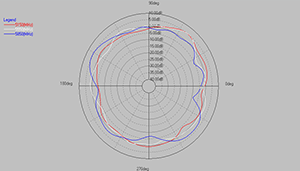
In this networking scenario, the AP connects two or more independently wired or wireless LANs through wireless links to construct a network on which users can exchange data. In Wireless Distribution System (WDS) mode, the AP supports Point-to-Point (P2P) and Point-to-Multipoint (P2MP) networking modes. With 5 GHz and 2.4 GHz frequency bands, the AP can implement wireless bridging and access functions.
Fit AP mesh networking

In this networking scenario, APs function as Mesh Points (MPs) and are fully meshed to establish an auto-configured and self-healing Wireless Mesh Network (WMN). APs with the gateway function can work as the Mesh Portal Points (MPPs) through which the WMN can provide access to the Internet. Terminals connect to APs to access the WMN. The WMN uses dedicated mesh routing protocols to guarantee high transmission quality and is more applicable to situations that require high bandwidth and highly stable Internet connections.
Fat AP networking
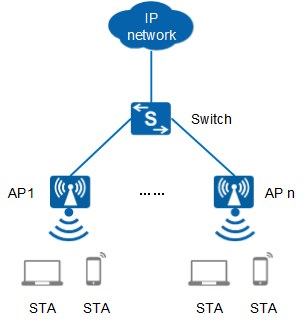
In th, is networking scenario, the device functions as a Fat AP to implement functions such as user access, authentication, data security, service forwarding, and QoS.






